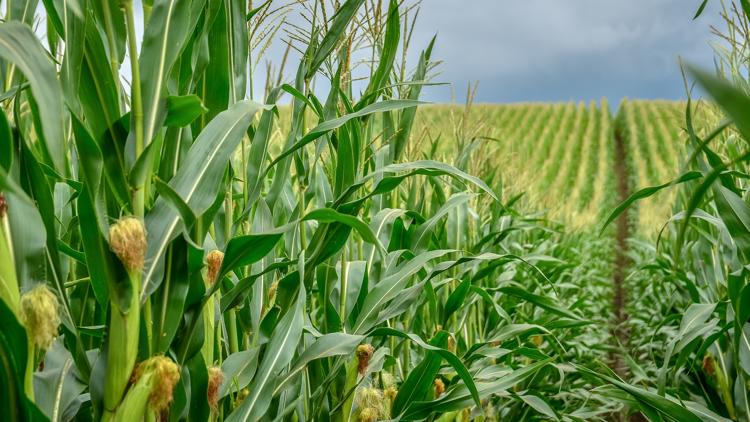ST. LOUIS — A week-long heatwave across Missouri and Illinois pushed temperatures into the triple-digits at times. In some areas, heat index values climbed to around 120 degrees.
The heat has a cumulative effect on our bodies. Several days of extreme heat along with overnight low temperatures, holding in the 70s to lower 80s, never let our bodies cool off without spending time in air-conditioned locations.
You might be surprised where some of the humidity comes from this time of year. Perhaps you've heard of corn sweat? On these hot summer days, corn fields can and do play a role in how hot it feels.
No, the corn doesn't sweat, but it does put an incredible amount of moisture into the air.
It's called transpiration, which is part of Earth's water cycle. Plants draw water through their roots into their stems and leaves and then release the water into the air as water vapor.
Did you know corn stalk roots can be more than 5 feet deep? You can't see the process, but you feel its effects as it increases the humidity.
An acre of corn gives off about 3,000 to 4,000 gallons of water each day. With over 13 million acres of cornfields in Illinois and Missouri, that's potentially more than 52 billion gallons of water released into the atmosphere each day. Not only can that make it feel more uncomfortable, but all that moisture can help fuel thunderstorms across our region if the conditions are right.
Recent rainfall ahead of this surge of hot weather helped green up plants and trees. At the onset of the hot weather last Sunday, damp ground and lush foliage helped add moisture to the air through evaporation and transpiration.
All plants put water back into the air, but during the current heatwave, corn played a role in just how uncomfortable we feel. Humidity levels have remained unusually high throughout the heatwave. The heatwave will end Friday night as a cold front drifts through the area.



